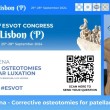
Interview with Catherine Hooper Glendale Veterinary Hospital Caledon, Ontario Canada
About five years ago, my dentist used a soft tissue laser on my jaw for pain. I had been in pain for several days with it and after a short treatment, found that my pain was gone. I began to research low level laser therapy in animals. Lasers have been used for years in horses but only recently have they become a regular choice for small animals. At the time I was researching the laser therapy, there were almost no animal lasers available.
LASER is an acronym for Light Amplification Stimulated Emission of Radiation. Nearly all early research in the applied use of laser therapy originated from Eastern Europe, China and the Soviet Union. There are three main components of a laser. It needs an energy source, a lasing or amplifying medium and a resonating cavity that is bound by mirrors. A laser provides an environment to support and sustain a stimulated emission of photons. These photons are absorbed by cells which transform the light energy into another form of energy. Depending on the wavelength of light, the photons may be heavily absorbed by one type of tissue versus another. Therefore there is the necessity for a variety of probes with different wavelengths to allow the treatment of both superficial and deep conditions.
Low Level Laser Therapy (LLLT) has been very successful in humans. It is used to treat cold sore, burns, and non-healing wounds such as bedsores and is very effective with tendonitis, arthritis and plantar fasciitis as a few examples. There is ongoing research to see whether lasers will help with spinal injuries as it has been shown that laser energy can stimulate the regeneration of nerves.
I use the Thor Low Level Laser Therapy system. It is a class IIIb laser so protective eyewear is required. (I also perform all of my surgeries with a class IV carbon dioxide laser which again, requires protective eyewear and a scavenging system to remove harmful plume.) The Thor system comes as a table top unit or a portable unit. I have both. Both units have an LED probe (a red light source with a wavelength of 600nm) which is used for superficial wound healing and stimulation of lymphatic drainage and both also have two watt laser probes (an infrared light source with a wavelength of 980nm) for deep inflammatory healing and pain relief.
We have now been using this system for four years, with great success. Class IV systems have recently become available and basically just shorten the treatment time and may have a deeper penetrating ability but I understand that it can also burn the patient. However, I am happy with the class IIIb system. We have successfully treated many conditions including: acral lick granulomas, cut pads that cannot be sewn, gum lesions, burn lesions, we have reduced or eliminated bruising after trauma. In addition, we have successfully treated several cervical disc diseased dogs who we admitted as either ataxic or paralyzed. We treat chronic arthritis with the consequence that often the animal did not need any NSAIDS.
Case examples.
Case #1.
A 10 year old Shih Tzu was diagnosed by MRI with lumbar disc disease between L3 and L4. He came in with hind limb ataxia with minimal reflexes and minimal deep pain perception. Anal tone was present. We instituted treatment with treatments starting daily for five days then every other day for 10 days. By the end of the first week, full pain perception had returned and he withdrew well on both legs. By the second week, he was standing with support and by the end of the third week; he was walking without any support and only occasional knuckling. Two years later the owner ceased further treatment and this little dog is still walking without any knuckling.
Case #2
An eight year old German shepherd with what was thought to be fast progressive degenerative myelopathy. He was knuckling on both hind legs and anal tone was minimal. After two weeks of therapy, knuckling was only occasional and his anal tone was improved. Treatment was continued on a weekly basis for this dog who survived comfortably for another year.
Case #3
A two year old German Shorthaired Pointer had walked on hot pavement and suffering severe burns to a right front foot-pad which sloughed off a 3 cm by 2cm piece. Daily treatment with the LED probe showed new pad growth within three days and complete healing in 10 days. Normally these cases need regular bandage changes and healing can take upwards of four weeks.















